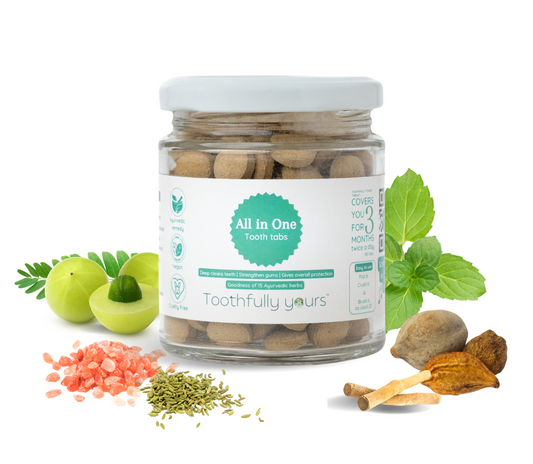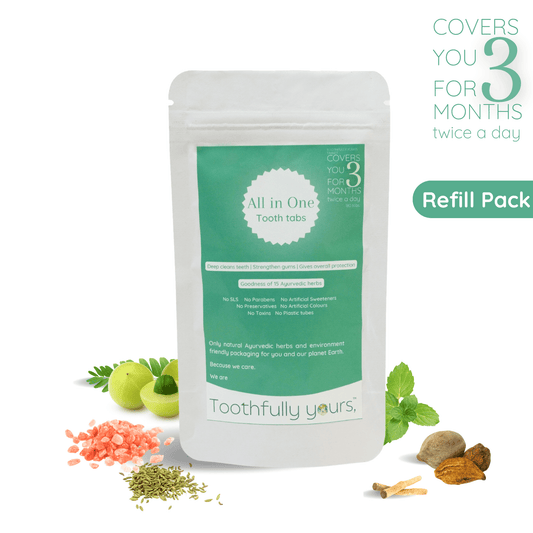What is Dental Floss? How to Use It
When we talk about oral hygiene, brushing often takes the spotlight. But there’s a silent hero in the background that doesn’t get nearly enough credit—dental floss. This simple tool can make a world of difference when it comes to keeping your mouth healthy, fresh, and free from hidden bacteria.
As a brand that values natural living and holistic health, we believe that true wellness starts with mindful daily rituals. Let’s unravel the importance of flossing and how it fits into your overall oral care routine.
What Is Dental Floss?
Dental floss is a thin, flexible thread—usually made of nylon, silk, or Teflon—that’s designed to clean the tight spaces between your teeth where your toothbrush can’t reach. It removes food particles and plaque from these narrow areas, helping to prevent cavities and gum disease.
Think of floss as the broom that sweeps out the corners of your mouth that your brush can’t reach.
Types of Dental Floss
Not all floss is created equal. Depending on your preferences and dental needs, here are the common types available:
-
Waxed Floss: Coated with a light layer of wax to make it easier to slide between tight teeth.
-
Unwaxed Floss: Thinner and squeaks when it cleans, great for those with more space between teeth.
-
Dental Tape: Broader and flatter, ideal for people with more surface area between teeth.
-
Flavored Floss: Comes with herbal or mint flavors for a fresher feel.
-
Eco-Friendly or Ayurvedic Floss: Made from silk or other biodegradable materials, often infused with natural ingredients like neem or tea tree oil.
For Ayurvedic oral care lovers, floss infused with herbal extracts supports both mechanical cleaning and natural healing.
Benefits of Flossing
Flossing isn’t just about removing leftover food—it’s a preventive health ritual. Here’s why it matters:
-
Prevents Gum Disease: Removes plaque buildup that causes inflammation and gum recession.
-
Reduces Bad Breath: Cleans hidden debris that leads to foul odor.
-
Prevents Cavities: Cleans areas prone to decay that brushing alone can’t reach.
-
Protects Heart Health: Studies show a link between oral hygiene and cardiovascular wellness.
-
Balances Oral Microbiome: Keeps harmful bacteria in check, supporting your body's natural defenses.
In Ayurvedic terms, it promotes "shuddhi" or purification, reducing "ama" (toxins) from the mouth.
Step-by-Step Guide on How to Use Dental Floss Properly
Here’s how to floss the right way:
-
Take About 18 Inches: Wrap most of it around your middle fingers, leaving a couple inches to work with.
-
Hold Tightly: Use your thumbs and index fingers to grip the floss.
-
Gently Slide Between Teeth: Avoid snapping; move the floss gently up and down.
-
Form a C Shape: Curve the floss around each tooth and slide it below the gumline.
-
Use a Clean Section: Move to a fresh part of the floss for each tooth.
-
Rinse: Once done, rinse your mouth with water or a herbal mouth rinse.
Pro tip: Floss before brushing to loosen debris, making brushing more effective.
How Often Should You Floss?
For most people, flossing once a day is ideal—preferably at night before bed. This removes the day's buildup and helps your mouth rejuvenate while you sleep.
In Ayurveda, nighttime cleansing rituals are crucial to eliminate toxins accumulated during the day. Consider flossing an important part of your "dinacharya" or daily routine.
Dental Floss for Different Needs
Depending on your unique dental needs, here’s what you might choose:
-
Sensitive Gums? Use soft, waxed floss or a floss pick with a gentle grip.
-
Braces or Dental Work? Use floss threaders or orthodontic floss designed to go around wires.
-
Eco-Conscious? Choose biodegradable or plant-based floss with herbal infusions.
-
Kids? Use floss picks with fun shapes and flavors to build the habit early.
- Myths & Misconceptions About Flossing
Let’s bust some common myths:
Myth 1: “Flossing creates gaps between teeth.”
Truth: Flossing doesn’t create gaps—it prevents gum disease that causes teeth to shift or loosen.
Myth 2: “If my gums bleed, I should stop flossing.”
Truth: Bleeding may indicate inflammation from not flossing enough. With regular flossing, bleeding usually stops.
Myth 3: “Brushing is enough.”
Truth: Your toothbrush can’t reach between teeth—flossing is essential.
Myth 4: “Flossing takes too much time.”
Truth: It takes less than 2 minutes—a small investment for long-term oral health.
Alternatives to Traditional Flossing
If traditional flossing isn’t for you, here are some effective alternatives:
-
Water Flossers: Use a stream of water to clean between teeth—great for braces and sensitive gums.
-
Interdental Brushes: Small, reusable brushes that fit between teeth.
-
Floss Picks: Handy tools with pre-threaded floss, easy for beginners or kids.
-
Herbal Mouth Rinses: While not a replacement, herbal rinses can complement your flossing routine.
Remember: Ayurveda emphasizes practical consistency over rigid routines. Find what works and stick with it.
Dental Floss FAQs
How do I use dental floss?
Gently slide it between your teeth, curve it into a “C” around each tooth, and move it up and down, reaching under the gumline.
Can we use dental floss daily?
Absolutely! Daily flossing is recommended to prevent plaque and maintain healthy gums.
Is it OK to floss without brushing?
Yes, especially if you’re in a rush. But for best results, combine both—floss first, then brush.
Do I floss first or brush?
Floss first! It dislodges debris, making brushing more effective.
Does flossing create gaps in teeth?
No, it helps prevent gum recession that can lead to gaps.
Final Thoughts
Flossing may seem like a small act, but its impact is mighty. It’s more than just a dental habit—it’s a mindful daily ritual that aligns with both modern science and ancient wisdom. Whether you use traditional floss, Ayurvedic-infused silk threads, or herbal mouth rinses, the goal is the same: to nurture your smile naturally.
Let flossing be your tiny, daily act of self-care—and your teeth (and gums) will thank you for a lifetime.





